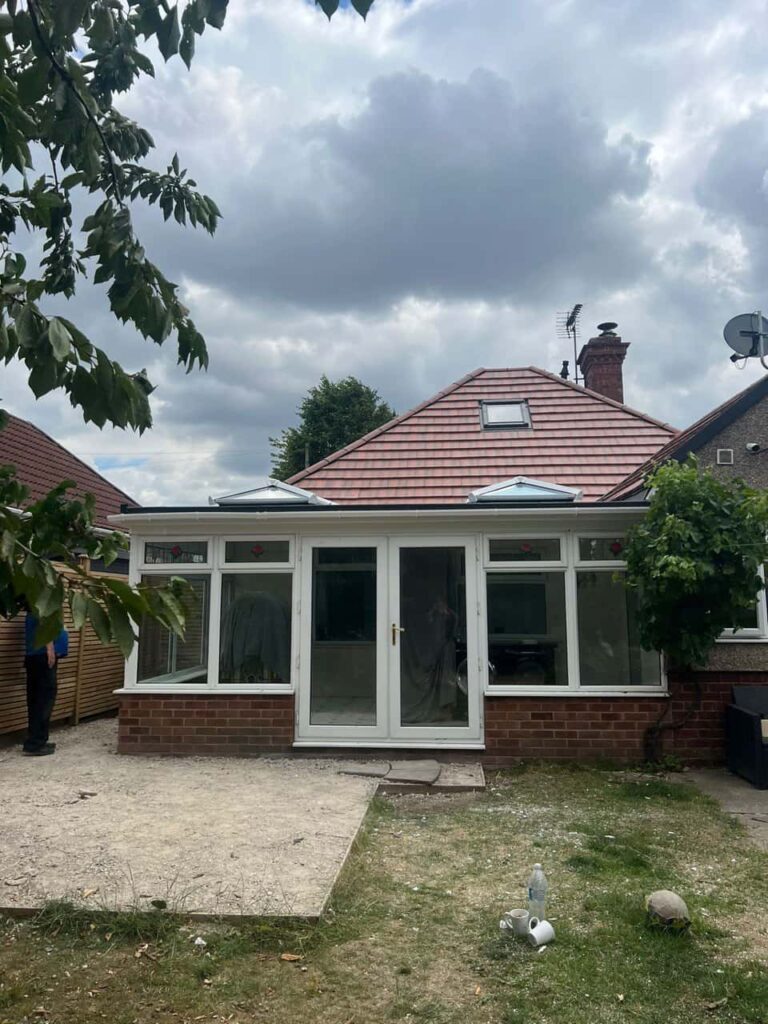Introduction: When it comes to gable roof repair, one often overlooked yet crucial element is flashing. Flashing is a protective component that plays a significant role in maintaining a watertight and secure roofing system. In this blog post, presented by Kirkby in Ashfield Roofing Repairs, we will delve into the importance of flashing in gable roof repair and how it safeguards your home from leaks and water damage.
What is Roof Flashing?
Flashing is a thin, weather-resistant material typically made of metal (such as aluminium, copper, or galvanised steel) or a specialised roofing membrane. Its primary purpose is to create a water-resistant barrier around roof penetrations and vulnerable areas where different roof sections meet. Flashing is strategically installed to prevent water from infiltrating these areas, often prone to leaks.
The Key Roles of Flashing in Gable Roof Repair
- Chimney Flashing: A gable roof and a chimney intersection are common vulnerable points. Flashing seals this junction, ensuring that water cannot seep through gaps or cracks in your home.
- Vent Pipe Flashing: Roof vents and plumbing vent pipes protruding through the roof are potential entry points for water. Properly installed vent pipe flashing provides a watertight seal around these openings, preventing leaks.
- Valley Flashing: Valleys, where two sloping roof sections meet, are prone to water runoff. Valley flashing directs water away from these areas, protecting against water intrusion and potential roof damage.
- Skylight Flashing: Skylights can be a beautiful addition to a gable roof, but they require specialised flashing to ensure they are completely sealed and waterproof.
- Wall Flashing: Where the gable roof meets a vertical wall, flashing is essential to prevent water from running down the wall and causing damage.
Flashing Installation and Maintenance
Proper installation of flashing is critical for its effectiveness. When your gable roof is repaired or installed, ensure that experienced roofing professionals correctly install the flashing in all necessary areas. Additionally, regular roof maintenance includes checking the flashing condition for signs of wear, damage, or deterioration.
Common Flashing Issues and Solutions
Over time, flashing can deteriorate due to exposure to weather conditions. Here are some common issues and their solutions:
- Rust or Corrosion: Metal flashing can rust or corrode over time. The damaged flashing should be replaced with new, corrosion-resistant material in such cases.
- Loose or Displaced Flashing: Flashing that has become loose or displaced can allow water to enter. Properly reattach or replace loose flashing to maintain its effectiveness.
- Cracks or Gaps: Over time, flashing may develop cracks or gaps. These should be sealed or replaced to ensure a watertight seal.
Conclusion: In gable roof repair, the role of flashing cannot be overstated. It is a vital barrier against water intrusion, protecting your home’s interior from leaks and damage. Proper installation and regular flashing maintenance are essential to ensure its long-term effectiveness.
Call us on: 01623 700 893
Click here to find out more about Kirkby in Ashfield Roofing Repairs
Click here to complete our contact form and see how we can help with your roofing needs.

